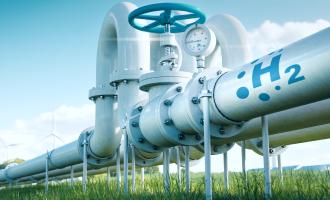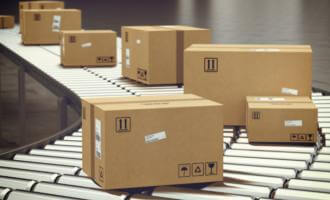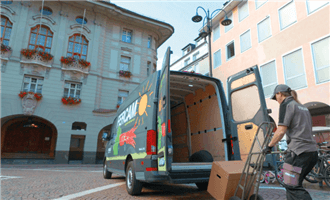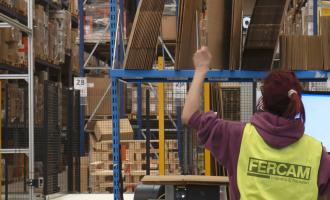
Alternative traction: LNG is the viable green choice
The transport sector still has a way to go to improve its environmental impact. However, the trend is positive and is supported by the increasingly widespread use of less polluting alternative fuels, among which the most concrete option to date is LNG. For many years, FERCAM has been at the centre of this innovation, which continues to proceed at a rapid pace.
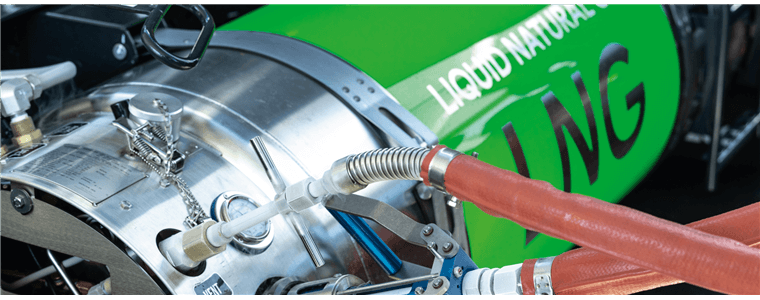
The data reported by the European Commission, in the context of projects for an eco-sustainable community development, reveal that almost a quarter of greenhouse gas emissions in Europe is due to the transport sector. A large part is attributable to the vehicle class, of which heavy vehicles make up roughly half. Companies operating in the road transport sector are therefore responsible for approximately 8% of total CO2 emissions and therefore significant opportunities to positively affect the future evolution of these statistics.
The conversion to intermodal of part of the journeys now made entirely by road is certainly the best way to increase the sustainability of transport, but it is clear that not all destinations can be reached by rail. In particular, for the management of short-range deliveries and last mile, the use of vehicles will remain essential, so it is equally imperative to intervene by progressively renewing the fleets, with trucks that have the least possible negative impact on the environment.
Investing in technological innovation, replacing the most polluting engines, is a strategy that has already paid off. Since 2006, also thanks to the introduction of certified environmental classes for engines and the updating of regulatory obligations, the curve of emissions due to transport has undergone an inversion and we are now observing a gradual and constant improvement. While waiting for the most recent and promising zero-emission technologies, such as electric and hydrogen engines, to become effectively available for heavy vehicles, the most practically viable alternative to diesel is the use of natural gas.
Compressed or Liquefied Natural Gas, a step forward compared to diesel
For several decades, natural gas, commonly known as methane, has been used as a less polluting and cheaper alternative to diesel to power both cars and commercial vehicles. The ratio between energy developed and the amount of CO2 emitted is the highest of all fossil fuels, so the environmental impact is reduced (-15% CO2 emissions). In addition, particulate emissions are almost reduced (-90%) and there is also a significant decrease in NOx emissions (-55%). Last but not least, the engine is much quieter than a diesel analogue.
Natural gas is produced by the anaerobic decomposition of organic material, which is found in fossil state, as it happens for petroleum or coal, but can also derive from other processes, such as animal digestion or volcanic activity. The main component is methane (CH4), mixed with other gaseous hydrocarbons. In order to be stored and used as a fuel, the gas can be compressed, remaining in the gaseous state, or cooled to -160 °, to make it liquid. The engines powered by the latter (LNG) have greater autonomy, since the fuel is very concentrated, and therefore are more suitable for traveling long distances.
BioLNG, fuel from renewable sources for a zero-emission future
Another step towards the sustainability of the transport sector is the abandonment of fossil fuels, as they are produced from non-renewable sources and not fully compatible with the EU zero emissions targets. The LNG engines currently in circulation are ready for replacement, as biogas is interchangeable with gas produced from fossil sources and the same applies to much of the existing infrastructure. The production of organic LNG is a virtuous circular process, which involves the fermentation of biomass such as household, agro-industrial, agricultural or livestock waste. The flow has the potential to be 100% ecological, as it can be powered by self-produced energy and does not generate harmful waste substances, on the contrary it purifies the primary material of the processing that would otherwise have been polluting.
FERCAM and LNG: an innovation 10 years in the making, and it is just the beginning...
FERCAM started investing in alternative drives even before the European vehicle classification was introduced. The first methane vehicles were introduced in 2012 in Spain, as there was already an adequate supply network in the country, and in 2014, the first full-LNG truck joined the Spanish fleet. A few years later, in 2018, natural gas vehicles were also introduced in Italy, travelling the section between Verona and Munich, in support of the project for the low-emission Brenner corridor. It is on this occasion that a new design (now registered property) dedicated to eco-friendly trucks with green details was launched. Finally, 2020 marked an important turning point, with FERCAM's shareholding in Biogas Wipptal, whose plant will produce BioLNG and will be equipped with a refuelling distributor near Vipiteno.
Of course, the innovative process does not stop there: other eco-compatible technologies are already under consideration and investments and periods of experimentation will be needed, to identify the best solutions and continue along the path of improvement. Hannes Baumgartner, MD, comments: "The resources for these investments can and must be found, since it is essential today to take better care of the environment, to ensure a future for the next generations. There are a whole series of new technologies that will support the sustainable development of our sector and we are responsible for making the right choices today, so that this can happen tomorrow».


 Language
Language
